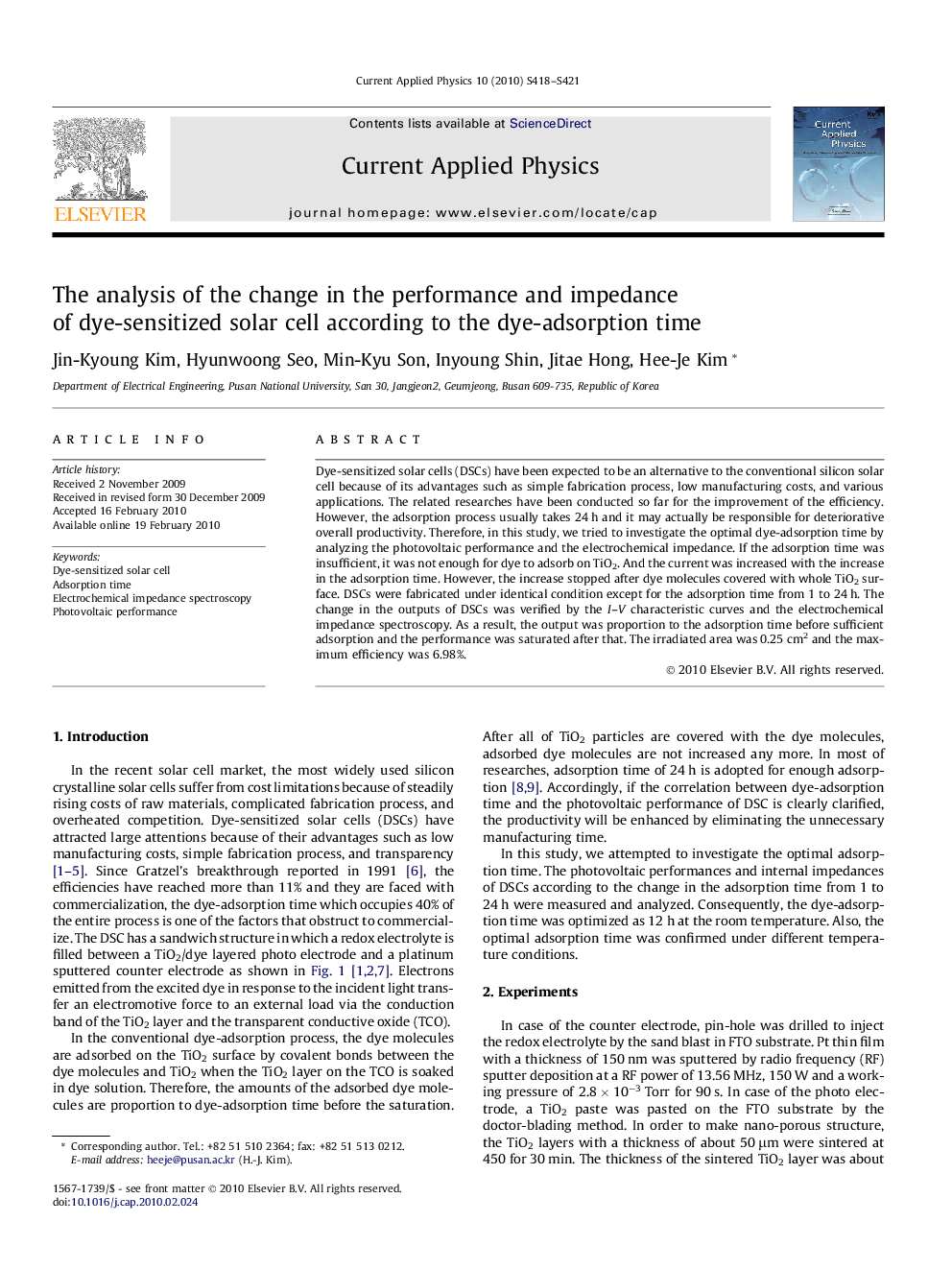| Article ID | Journal | Published Year | Pages | File Type |
|---|---|---|---|---|
| 1788790 | Current Applied Physics | 2010 | 4 Pages |
Dye-sensitized solar cells (DSCs) have been expected to be an alternative to the conventional silicon solar cell because of its advantages such as simple fabrication process, low manufacturing costs, and various applications. The related researches have been conducted so far for the improvement of the efficiency. However, the adsorption process usually takes 24 h and it may actually be responsible for deteriorative overall productivity. Therefore, in this study, we tried to investigate the optimal dye-adsorption time by analyzing the photovoltaic performance and the electrochemical impedance. If the adsorption time was insufficient, it was not enough for dye to adsorb on TiO2. And the current was increased with the increase in the adsorption time. However, the increase stopped after dye molecules covered with whole TiO2 surface. DSCs were fabricated under identical condition except for the adsorption time from 1 to 24 h. The change in the outputs of DSCs was verified by the I–V characteristic curves and the electrochemical impedance spectroscopy. As a result, the output was proportion to the adsorption time before sufficient adsorption and the performance was saturated after that. The irradiated area was 0.25 cm2 and the maximum efficiency was 6.98%.
